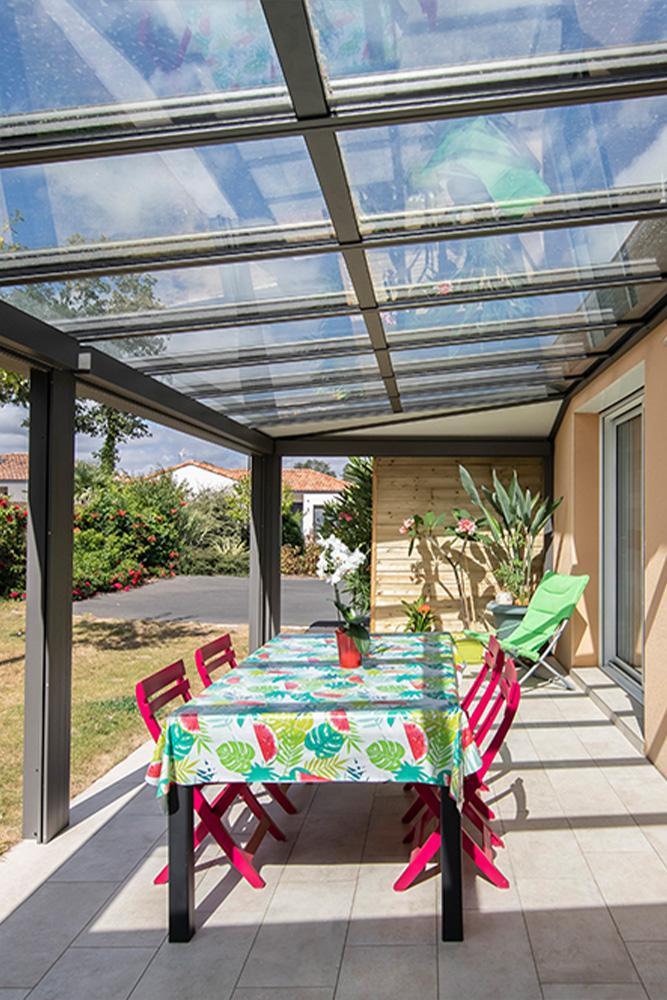How to prune a climbing vine on a pergola?
Traditionally and historically, pergolas were adorned with climbing plants. They were used to shade paths in gardens and parks, while at the same time decorating the landscape. They have become more modern and design-oriented over the years, but they are still a very popular support for climbing vines. But how do you prune a climbing vine so that it flourishes on a pergola?
What is a climbing virgin vine?
The virgin vine is a deciduous climber. It doesn't flower much, but its flamboyant colours change with the seasons. Before dropping in winter, its green leaves turn crimson and then scarlet to create a magnificent final bouquet.
Its little suction cups allow it to easily wrap itself around any support you provide.
Very easy to grow, this climber is fast-growing and requires little maintenance. Pruning from time to time is all that's needed. The other advantage of having a vine on a pergola is that by covering the roof and the trellis fixed to the side, it becomes a perfect insulator for your relaxation area. This outdoor space is protected from the sun and bad weather, and the heat is much milder. The virgin vine even helps to reduce ambient noise, by attenuating the echo that is lost in its foliage!
The ideal time to prune your climbing vine
As we saw earlier, pruning is the only constraint when you put a vine on a pergola. You have planted it properly, i.e. in March when there is no frost. You've guided it properly with stakes and trellises. Now it's time to prune your climber!
Ideally, you should prune your climbing vine twice a year, after the frosts and at fruiting time in summer.
In winter, the vine goes into a vegetative sleep, saving its energy. The sap sinks and concentrates on its vital parts. Pruning during this period affects the quality of the foliage and the abundance of fruit to come.
Summer pruning is lighter. It is carried out between June and the end of July and allows the foliage to be thinned out, gives the vine vigour and brings it all the benefits of the sunshine. By limiting the number of bunches of grapes to a maximum of 5 per vine ring, by cutting virgin vine rings shorter and by eliminating very small bunches, you help your vine to bear fruit and spread out.

How do I prune a climbing vine?
The year you plant your vine, all you have to do is prune off two buds, also known as ‘eyes’. Then you'll get branches that grow from the stump. You can then direct them onto the post of your pergola, securing them as they grow. Next, the climbing vine will try to cover the roof of your pergola, so you need to guide the shoots horizontally.
From the second year onwards, using secateurs, start by cutting away the dead wood and then removing the stems growing at its base to make way for the new shoots.
If your vine has borne fruit, cut off any old shoots that have borne grapes. For better healing, leave a distance of 5 mm from the base of the carpenter branch.
Secondary shoots should be pruned after the 2nd or 3rd eye.
Which pergola plant to use with climbing vines?
The virgin vine rarely, if ever, flowers! That's why it's an excellent idea to combine it with another climber that flowers well. Among the climbers that acclimatise easily is the clematis. It produces small pink, mauve or white flowers. Sweet peas are also very easy to care for and come in a variety of country colours. Finally, passionflower is an unusual flowering climber that finishes flowering in mid-autumn, when the vine's foliage turns purple and red.

Read all the articles in the magazine
You have a project?
Would you like a personalised 3D study and a free quotation? Contact us by clicking below.
AKENA is...
Over 40 years of experience
Founded in 1981 by one man, we now have more than 500 employees dedicated to making your project a success.
Made in France
A historic site and two factories covering more than 25,000 m² in Dompierre-sur-Yon in the Vendée region (85)
Innovative and tailor-made products
At AKENA, we are brimming with new ideas to improve and enhance our products.
The European leader in conservatories, pergolas...
But not only! AKENA also offers a complete range of carports and pool houses.







